In this time of pandemic, a study of previous epidemics in Tuscany and Italy shows many similarities of successful disease management and dismal failures. Surprisingly, not much has changed in a thousand years.
Ferrara was ahead of its time in 1630
The Black Plague (bubonic plague) ravaged large cities and provincial towns in northern and central Italy from 1629 to 1631, killing more than 45,000 people in Venice alone and wiping out more than half the population of cities like Parma and Verona. But strikingly, the northern Italian town of Ferrara in Emilia-Romagna managed to prevent even a single death from the plague after the year 1576—even as neighboring communities were devastated.
Critical in the Ferrara’s success, records suggest, were practices in use today: border controls, sanitary laws and personal hygiene.
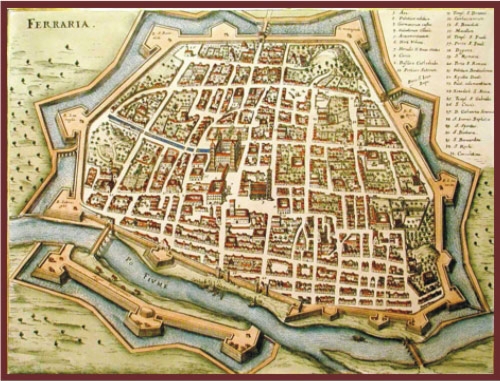
Ferrara was (and still is) a walled city situated along a branch of the Po River halfway between Padua and Bologna, both badly affected by plague in 1630. When Ferrara learned of the presence of plague in the region all but two of the city gates were locked and surveillance teams composed of wealthy noblemen, city officials, physicians and apothecaries were activated. Anyone arriving at the city gates needed to carry identification papers called Fedi (“proofs”) to ensure they had arrived from a plague-free zone. They would be screened for any signs of disease and quarantined. (The word “quarantine” comes from Italian quarantina (forty days) and quaranta (forty).)
Within the city, the same level of vigilance was employed to identify suspected cases of infection and move individuals into one of two lazaretti or plague hospitals located outside of Ferrara’s city walls.
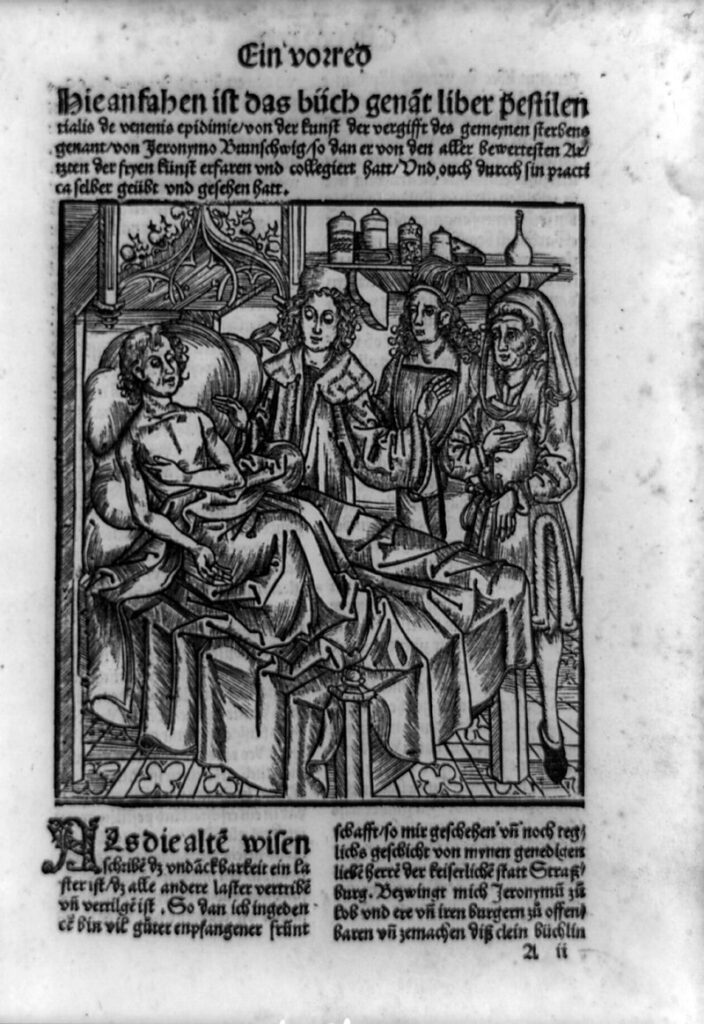
For personal hygiene, like people throughout the Italian peninsula, the citizens of Ferrara turned to a variety of natural remedies for protection against the plague. But, reportedly, they prized one above the rest: a medicinal oil called Composito. “By law, a ready supply of Composito was to be stored in a locked box set into the wall of the municipal palace and only distributed in times of plague.” (History.com)
The secret recipe for Composito was concocted by the Spanish physician Pedro (aka Pietro) Castagno, who wrote Ferrara’s pandemic playbook, Reggimento contra la peste (“Regimen against the plague”), which described the importance of daily personal cleanliness (rare in the 1500s) and how the oily antimicrobial balm should be applied to the body.
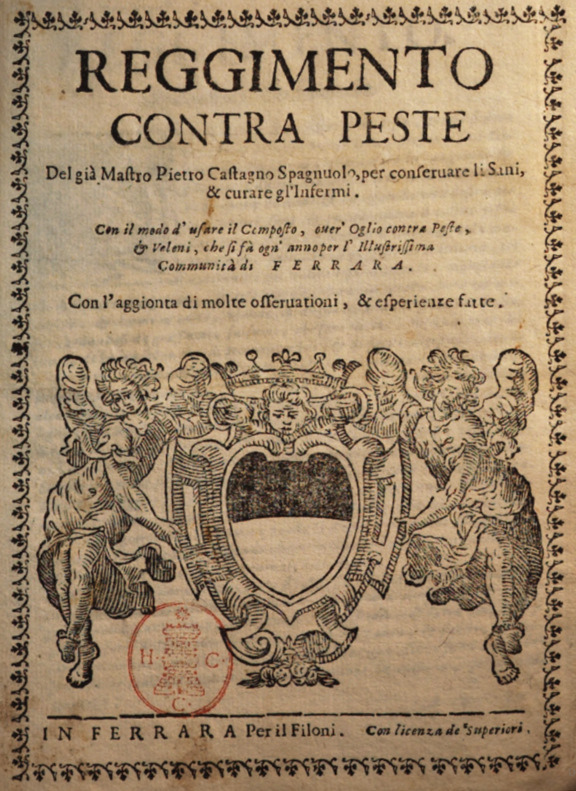
“Castagno never disclosed the ingredients used in making Composito, but by examining records of materials that Castagno ordered, researchers determined that the balm contained myrrh and Crocus sativus, both known for their antibacterial properties, as well as venom from both scorpions and vipers.” (History.com)
Lodi 2020 = Ferrara 1630
In the Covid-19 pandemic, the nearby towns in Lombardy of Lodi and Bergamo showed the necessity of social distancing through lockdown of the civic population. Lodi imposed a lockdown of the town on February 23, 2020 and achieved flattening of the curve of transmission of the virus. Bergamo waited until March 8 and became the international face of uncontrolled infections.
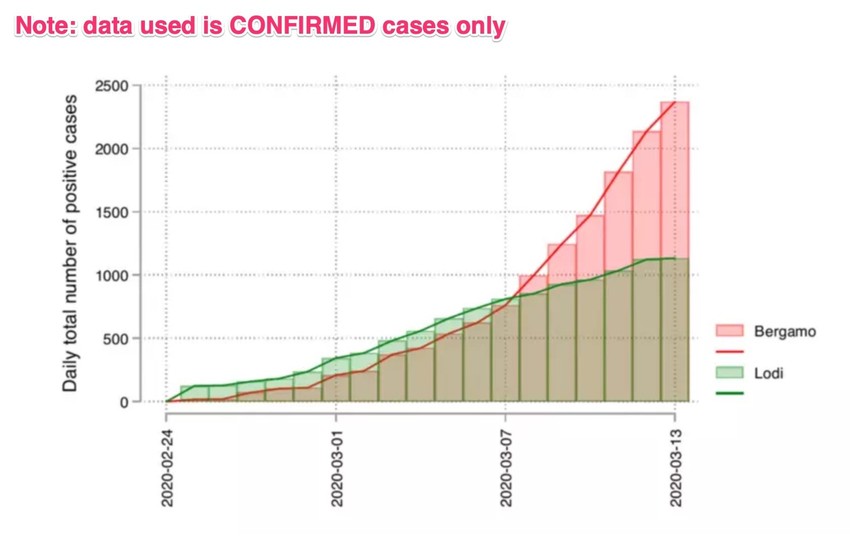
Unlike the U.S., Italy was able to flatten its countrywide infection curve. That was due to an edict at the national level for a strict lockdown of all cities and towns. Leadership at the top is important.
Mass death in Florence – historical epidemic in recent news
Florence is well known for La Grande Mortalità, The Black Death (1348-1350), but it experienced other epidemics of bubonic plague (540 AD, 1348, 1630). In February 2014, headlines in Europe and the U.S. proclaimed that “plague victims” were unearthed in Florence.
About ten years ago, work was done to make the Uffizi more accessible(the huge museum is on the upper floors of a 16th century palazzo). This included a new set of elevators, which require deep excavation. Construction in Italy is always slow so a delay from the 2008 start wasn’t surprising. What was news, finally released in 2014, was that the delay was due to the discovery of a mass grave containing over 75 skeletons.
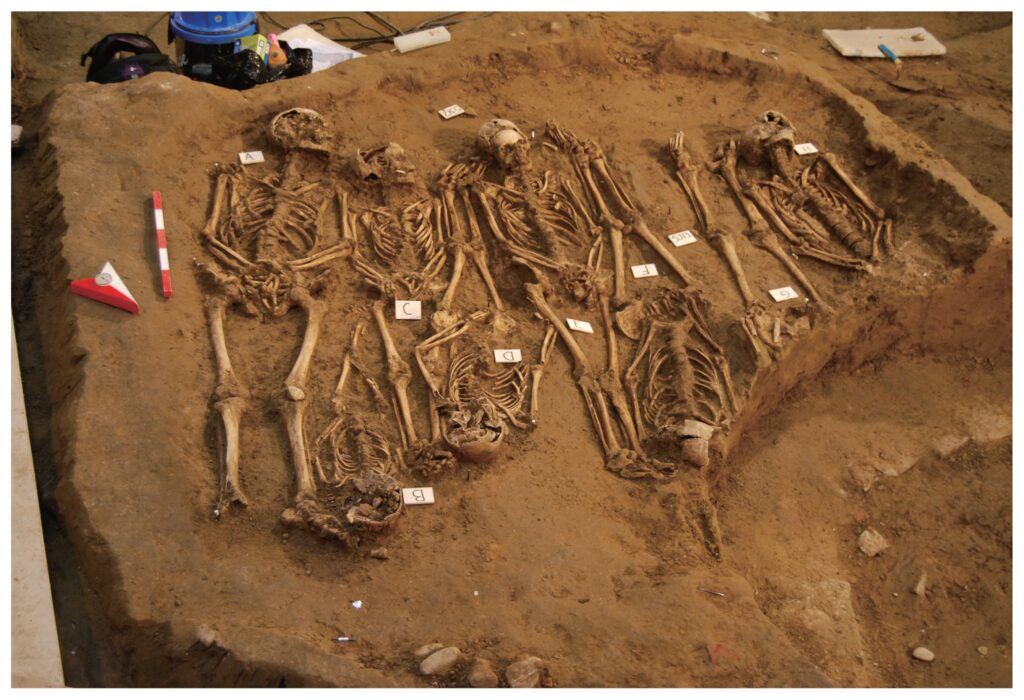
Archaeological excavations (2008, 2013, and 2014) reportedly led to uncover a large sepulchral area under the basement of the eastern wing of the Uffizi Gallery. Aside from single graves, 14 multiple graves were excavated and a total of 75 individuals were exhumed. It was determined that in multiple graves, up to ten individuals had been deposed simultaneously. Studies showed that this area did not correspond to an ordinary cemetery, but to an emergency burial site associated with a catastrophic event dug outside of the existing city walls possibly during an epidemic of unknown etiology.
The burial site was preliminarily dated between the second half of the 4th and the beginning of the 5th centuries AD, based on Roman minted coins associated with some of the skeletons. This is a rough estimate because the coins could have been minted in decades earlier than the epidemic.
It is possible that this burial site is connected to the Justinian Plague that ravaged the Byzantine Empire and Europe from 541 to 542 BC. Carbon-14 dating of the bones and DNA studies to determine the disease process that caused the mass death was planned after the excavation, but I have not found any indication that those studies have been published. (If anyone finds the results of these studies, please leave a comment here.)
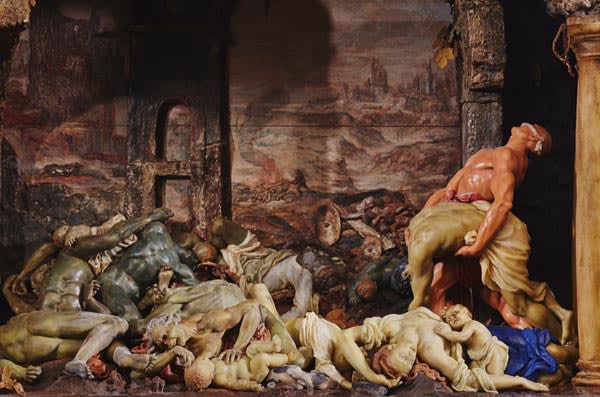
As Covid-19 was starting to spread in Europe in December 2019, a team of French and Italian scientists published a study of samples taken from the Uffizi site in the Korean Journal of Parasitology. This was a discovery of what we would now talk about as a co-morbidity that may have contributed to the high death rate in these ancient epidemic victims – intestinal roundworms.
In this study, paleoparasitological investigations were performed on 18 individuals exhumed from 9 multiple graves to assess the burden of gastrointestinal parasitism. Five out of eighteen individuals (27.7%) tested positive for ascarid-type (roundworm) remains or “decorticated” Ascaris eggs found in the “soil” retrieved from where the abdominal organs would have been.
Roundworms, which can grow to 12 inches long, commonly infest human populations under dire sanitary conditions. Archaeological and historical evidence indicates that Florence (known in Roman times as Florentia) suffered a period of economic crisis between the end of 4th and the beginning of the 5th centuries AD, and that the aqueduct was severely damaged at the beginning of the 4th century AD, possibly during the siege of the Goths (406 AD). The scientists wrote: “It is more than plausible that the epidemic, possibly coupled with the disruption of the aqueduct, deeply affected the living conditions of these individuals. A 27.7% frequency suggests that ascariasis was widespread in this population.”
This investigation shows how paleoparasitological information can be retrieved from the analysis of sediments sampled in cemeteries, thus allowing a better assessment of the varying frequency of parasitic infections among ancient populations. The scientists did not believe that the roundworm infestation caused the mass death, but may have created a weakened population that could not survive a more severe infectious epidemic.
We look forward to further scientific studies emerging from the Uffizi Gallery archeological site.
